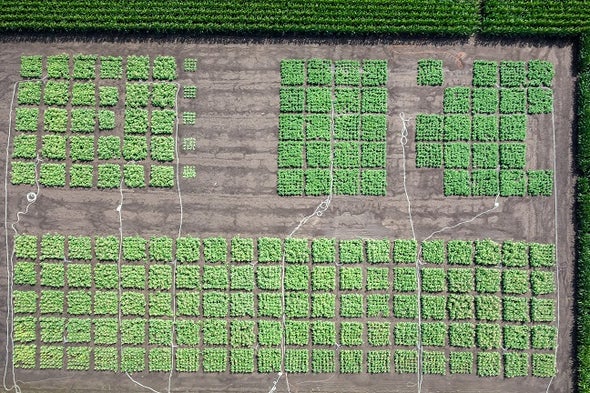This is Scientific American's 60-second Science, I'm Christine Herman.
Tobacco plants of, course, are grown to make cigarettes. But tobacco is also used a lot in scientific research. And a new study shows tobacco can be genetically engineered to churn out large amounts of a commercially important bacterial enzyme known as cellulase. The enzyme has many industrial uses, including as an agent in the production of biofuel.
And even while their plant machinery is being co-opted as an enzyme-making factory, the plants suffer no reduction in yield while grown out in the field compared with unaltered plants. That fact is rather remarkable, because you might suspect that when a plant is expending resources to create large amounts of cellulase it would struggle to grow. But that's not the case here.
The proof-of-concept study is in the journal Nature Plants.
University of Illinois plant biologist Justin McGrath is a co-lead author of the study. He says the work could lead to lower costs for producing useful proteins like enzymes and some vaccines. That's because it can be way cheaper to cultivate tobacco plants in a field than to grow genetically modified yeast and other microbes indoors in large fermenters. Here's McGrath:
"Our estimates from this study are that it would cost between 20 cents and one dollar to produce a gram of this cellulase, whereas current methods, depending on the type of method you're using, could cost from a couple hundred dollars to a couple thousand dollars."

Growing such plants in the field rather than indoors also makes it much easier to pursue really large-scale production of medicinal and industrial proteins.
But any time you talk about growing genetically modified plants out in open areas, there's a concern that the DNA inserted into the crop could escape and find its way into other organisms. But the researchers safeguard the system against such an incident by avoiding the cell nucleus, where DNA is available to be duplicated and passed along. Instead, they modified the DNA in the chloroplasts—organelles responsible for photosynthesis, not reproduction.
"That adds a very nice safety feature." Rainer Fischer, a veteran biotechnology researcher at Purdue University. He wasn't involved in this study. "So basically you don't have any chloroplasts in tobacco pollen, so there should be no danger for outcrossing" — that is, no foreseeable risk of having the foreign DNA find its way into other plants in nature.
Further research will determine if this system can work to produce other valuable enzymes, which could help transform the tobacco plant from health enemy to ally.
Thanks for listening for Scientific American — 60-Second Science. I'm Christine Herman.












